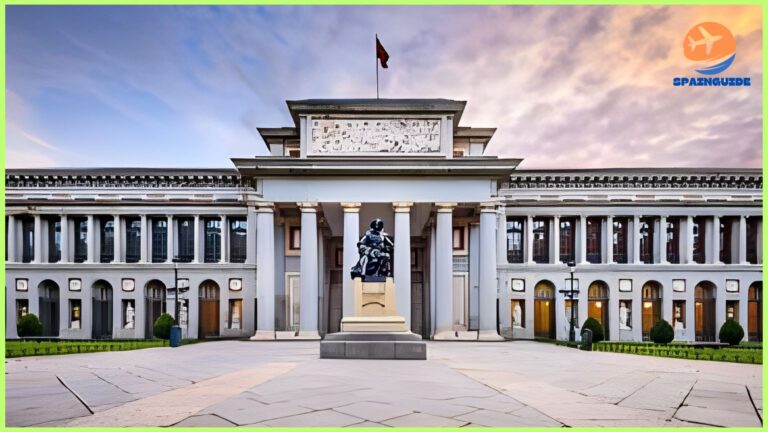Al-Andalus, also known as Islamic Spain, was a period of history characterized by Islamic rule and influence in the Iberian Peninsula from the 8th century to the 15th century. This era left a lasting impact on the region’s culture, architecture, science, and literature. In this article, we will delve into the fascinating history of Al-Andalus, exploring its origins, golden age, decline, and legacy.
Origins of Al-Andalus
The history of Islamic Spain begins with the Umayyad conquest of Hispania in 711 AD. Led by Tariq ibn Ziyad, an Islamic general, the Umayyad forces defeated the Visigothic Kingdom and established Islamic rule in the region. This conquest marked the beginning of Al-Andalus, which soon became a center of Islamic civilization in Europe.
The Golden Age of Al-Andalus
The period from the 8th to the 10th century is considered the golden age of Al-Andalus. Under the Umayyad Caliphate of Cordoba, the region experienced a flourishing of arts, sciences, and culture. Islamic scholars, poets, and philosophers thrived in Al-Andalus, making significant contributions to fields such as astronomy, medicine, mathematics, and literature. The city of Cordoba became one of the most advanced and cosmopolitan cities in the world, known for its grand mosque, libraries, and academic institutions.
Cultural and Architectural Legacy
The Islamic rule in Al-Andalus left a profound impact on the region’s culture and architecture. Islamic art and architecture flourished, blending Islamic, Byzantine, and Visigothic influences to create unique styles such as Mudejar and Mozarabic. The Alhambra in Granada, with its intricate Islamic designs and beautiful gardens, is a stunning example of this architectural legacy.
Decline and Reconquista
The golden age of Al-Andalus came to an end with the internal conflicts and fragmentation of the caliphate. The Christian kingdoms in the north, known as the Reconquista, gradually began to reconquer the Iberian Peninsula. The fall of Cordoba in 1236 and the completion of the Reconquista with the fall of Granada in 1492 marked the end of Islamic rule in Spain.
Legacy of Al-Andalus
Despite its eventual decline, Al-Andalus left a lasting legacy on Spain and Europe. The region’s Islamic heritage influenced the Spanish language, cuisine, music, and architecture. Many words in Spanish have Arabic roots, reflecting the linguistic impact of Al-Andalus. The architectural marvels of Al-Andalus, such as the Alhambra and the Great Mosque of Cordoba, continue to attract visitors from around the world, showcasing the rich cultural heritage of Islamic Spain.
Impact on Language and Literature
One of the most significant contributions of Al-Andalus to Spanish culture is in the realm of language and literature. During Islamic rule, Arabic became the dominant language of administration, culture, and learning in Al-Andalus. Arabic influence is evident in the Spanish language, with thousands of words of Arabic origin integrated into Spanish vocabulary. These words cover a wide range of topics, including science, mathematics, agriculture, architecture, and everyday life. Examples include “alcohol,” “azúcar” (sugar), “jarra” (jar), and “naranja” (orange).
The influence of Arabic extends beyond vocabulary to the structure and phonetics of Spanish. The phonetic similarities between Arabic and Spanish, such as the pronunciation of certain consonants and vowels, can be traced back to the interaction between Arabic and the local languages spoken in Al-Andalus. This linguistic exchange enriched both Arabic and Spanish, contributing to the linguistic diversity and richness of the Spanish language.
In addition to linguistic influence, Al-Andalus played a crucial role in the preservation and transmission of classical knowledge. Islamic scholars in Al-Andalus translated ancient Greek, Roman, and Persian texts into Arabic, preserving and expanding upon the works of philosophers, mathematicians, and scientists. These translations, known as the “Islamic Golden Age,” were later translated into Latin and other European languages, reintroducing classical knowledge to Europe and laying the foundation for the Renaissance.
Scientific and Technological Advancements
The Islamic rule in Al-Andalus also witnessed significant advancements in science and technology. Islamic scholars in Al-Andalus made pioneering contributions to fields such as astronomy, medicine, mathematics, and engineering. The famous physician and philosopher Ibn Sina (Avicenna) and the mathematician Al-Khwarizmi are just two examples of the many scholars who flourished in Al-Andalus.
One of the most notable achievements of Islamic Spain was the development of algebra, a branch of mathematics that revolutionized mathematical thinking and laid the groundwork for modern algebraic concepts. Al-Andalus also made significant advancements in astronomy, with scholars like Ibn al-Zarqali (Arzachel) making important contributions to celestial navigation and the development of accurate astronomical instruments.
The history of Al-Andalus is a testament to the cultural, intellectual, and scientific achievements of Islamic civilization. From its linguistic influence on Spanish to its contributions to literature, science, and technology, Al-Andalus continues to be a source of inspiration and fascination. The legacy of Al-Andalus lives on in the diverse and vibrant culture of Spain, reminding us of the enduring impact of Islamic Spain on the world.







